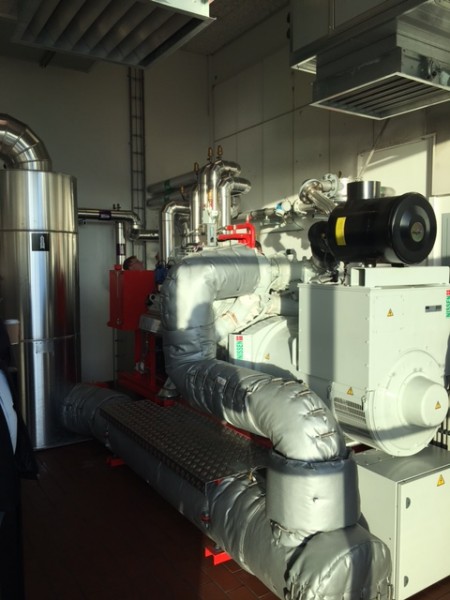Resource Recovery
 Glenbard has completed its Combined Heat and Power (CHP) Project. Combined heat and power systems are a part of a fast growing, sustainable technology shift that involves both the production of usable electrical energy and heat energy in one facility.
Glenbard has completed its Combined Heat and Power (CHP) Project. Combined heat and power systems are a part of a fast growing, sustainable technology shift that involves both the production of usable electrical energy and heat energy in one facility.
For larger wastewater treatment plants (WWTP), part of the waste stabilization process involves the generation of methane gas (biogas) in anaerobic digesters. This gas has traditionally been utilized to generate heat for use in boilers/heat exchangers for a variety of treatment plant needs. Engine generators have also been implemented to use natural gas or biogas, usually to provide stand-by power in case of emergency but increasingly to offset the “grid supplied” electrical costs of the WWTP. In past, these two functions were performed with separate equipment and facilities.
The Glenbard Wastewater Authority CHP Project now combines these two processes into a single, sustainable process that aims to reduce the use of fossil fuel-based energy. The GWA Combined Heat and Power (CHP) Facility can produce 750 kW of electricity and 2.88 MMBTU/h of usable heat (equivalent to 842 kW), utilizing the biogas generated at the wastewater facility.
The CHP Facility at Glenbard contains two (2) 375kW CHP units and associated pumps, piping, valves and other equipment. These CHP units combine an engine generator with a heat exchanger system. Combustion of biogas in the engine runs the generator to produce electricity, which is fed back into the WWTP electrical grid. The operation of the engine generator creates latent and sensible heat, which is captured in a water-based heat recovery system for use in the WWTP’s boilers. On average, a CHP unit is around 30% more energy efficient than having two separate systems and, in this case, has the advantage of being able to utilize non-fossil fuels.
Glenbard Wastewater receives an average of over 2 million gallons of high strength waste a year, helping us save close to $300k in electricity costs a year.
View More










